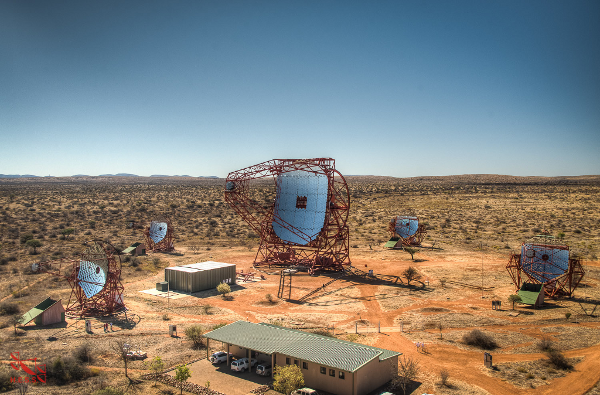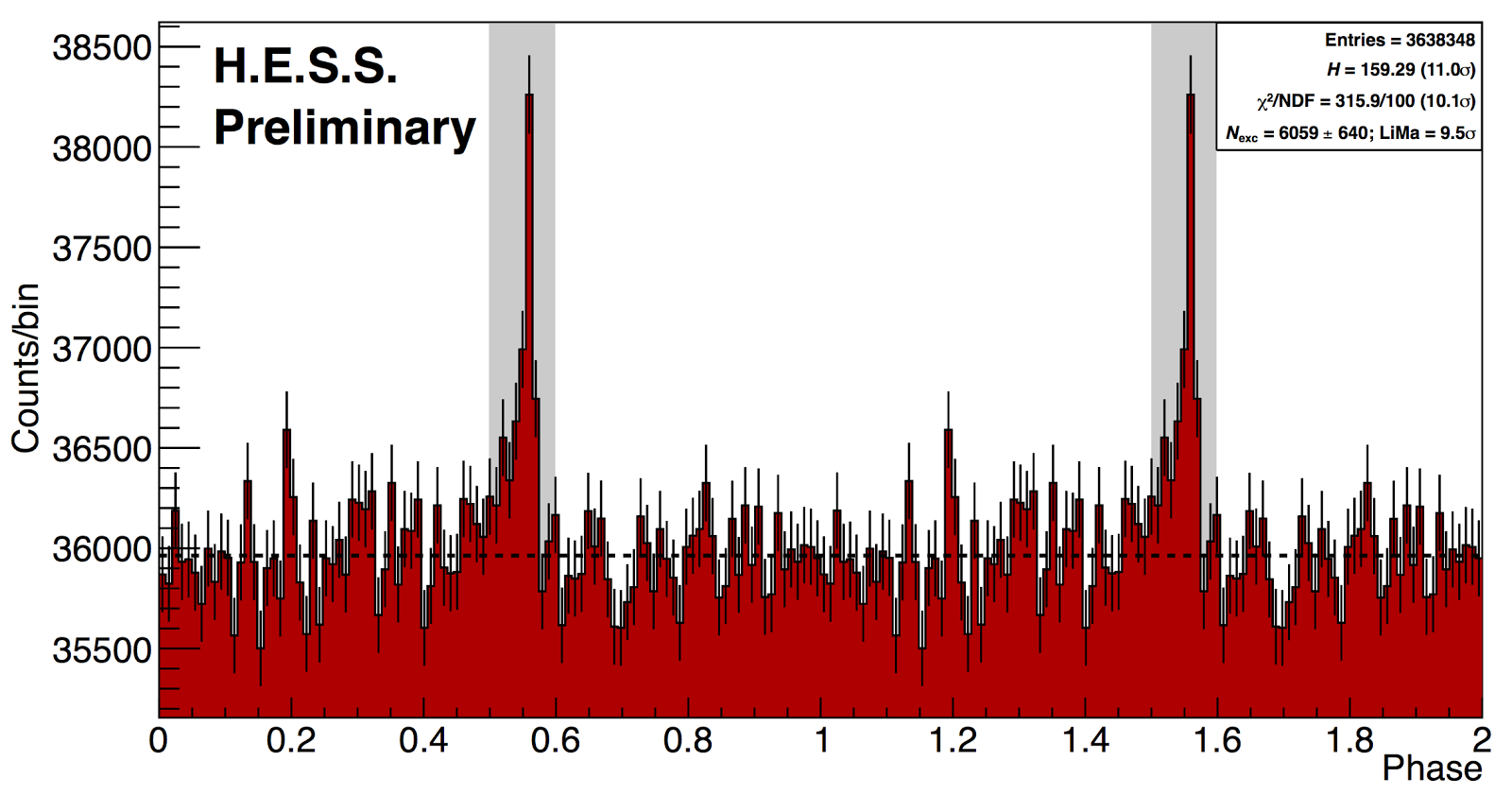
(Image by Christian Föhr, MPIK)
Following the intensive commissioning phase of the new large 28-meter telescope (H.E.S.S. CT5), the H.E.S.S. collaboration has announced the detection of gamma rays of 30 gigaelectronvolts (GeV) fromground level. The High Energy Stereoscopic System, which is located in Namibia, measured pulsed radiation in thesouthern sky for the first time, thus demonstrating spectacularly its performance. The radiation originates from the Vela pulsar, the first pulsar detected by H.E.S.S. and – after the Crab pulsar in 2011 – the second pulsar ever detected by ground-based gamma ray telescopes.
Since the upgrade of the H.E.S.S. experiment in Namibia in 2012, H.E.S.S. II with its fifth and larger Cherenkov telescope CT5 is the first Cherenkov telescope system with telescopes of different sizes detectingcosmic TeV gamma rays in sync. CT5 is placed in the centre of the system, extends the energy range to lower energies and allows for the detection of cosmic particle accelerators down to 30 GeV. A tailor-made reconstruction analysis was developed for these low-energy gamma rays. With this, the scientists were able to detect a pulsed, repeating gamma-ray signal in the energy range of 30 GeV and attribute it to the Vela pulsar. This opens the door to new observation possibilities of the inner Galaxy.
Besides intensive efforts in the construction and calibration of CT5, two years of intensive software development determined this success. For the reconstruction of the data from CT5, a highly sensitive analysis method based on extremely complex statistical algorithms has been elaborated. This allows to detect gamma radiation of only 30 GeV from ground level. Since H.E.S.S. telescopes are able to survey a projected area of about 10 hectares in the atmosphere, they have a considerably higher yield of gamma rays than for example satellite experiments like Fermi LAT. From some sources, it is possible to spot up to one gamma per second – a record.
The data reveal regular gamma ray pulses, repeating every 89 milliseconds, coming exactly from the irection of the Vela pulsar. The reconstructed energies of these gamma rays are in the range of 30 GeV. This shows that H.E.S.S. for the first time successfully measured pulsed radiation in the southern sky.
Cherenkov telescope systems consist of large segmented mirrors which focus optical Cherenkov light flashes.These flashes are generated in the atmosphere, last only a few nanoseconds and are invisible for the human eye. They are generated by cascades of elementary particles triggered by cosmic radiation. With highly sensitive cameras, Cherenkov telescopes take pictures of events which allow to identify gamma radiation to construct images of cosmic particle accelerators which emit this kind of gamma radiation. H.E.S.S. is the only such system in the southern hemisphere and the only one with different reflector sizes. Therefore, H.E.S.S. ideally paves the way for the Cherenkov Telescope Array CTA, planned in international collaboration, which as from 2017 will be built with a total of about 100 Cherenkov telescopes of three sizes, distributed over two sites.
Nicolaus Copernicus Astronomical Centre of the Polish Academy of Sciences is a Polish coordinator of the H.E.S.S. project. Other members of the Polish consortium include: Jagiellonian University, Cracow; Institute of Nuclear Physics of the Polish Academy of Sciences; University of Warsaw; and Nicolaus Copernicus University, Torun.

Pict. 1. Periodic pulses of gamma radiation (period 89 ms) from Vela pulsar found in H.E.S.S. data.






